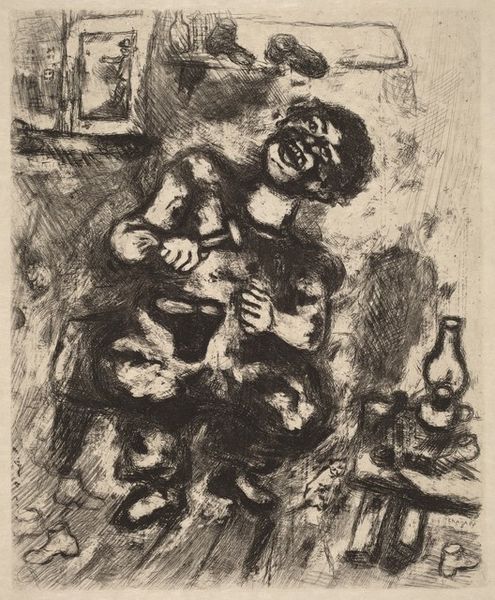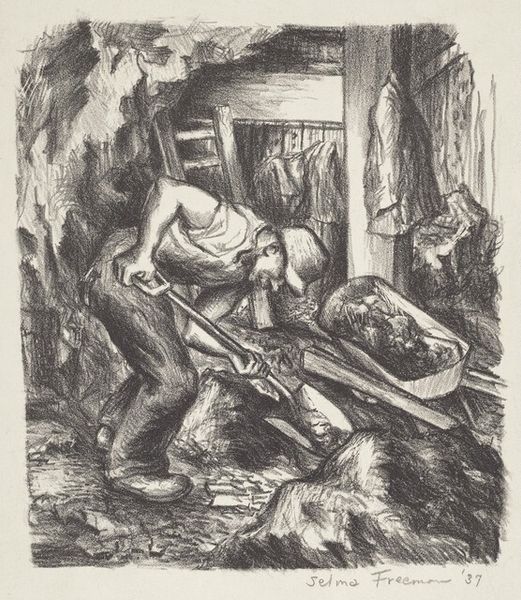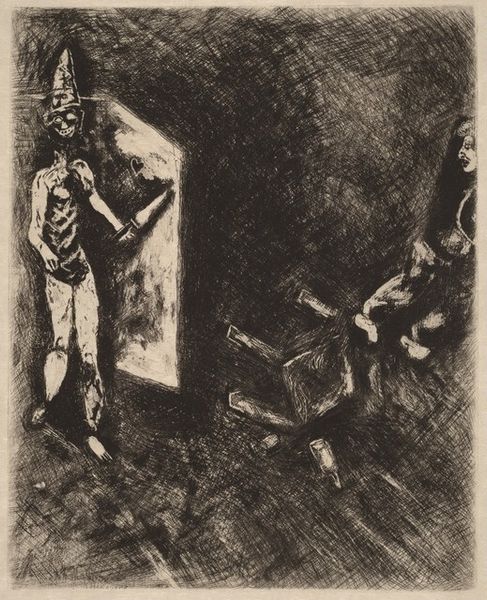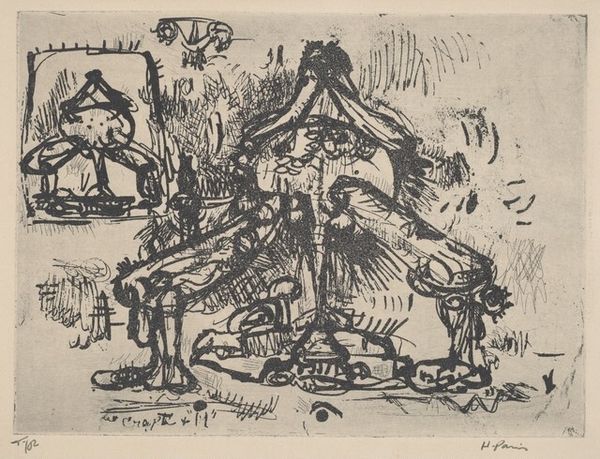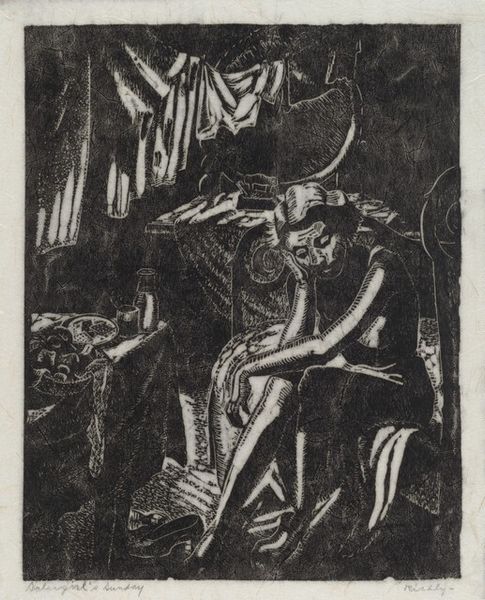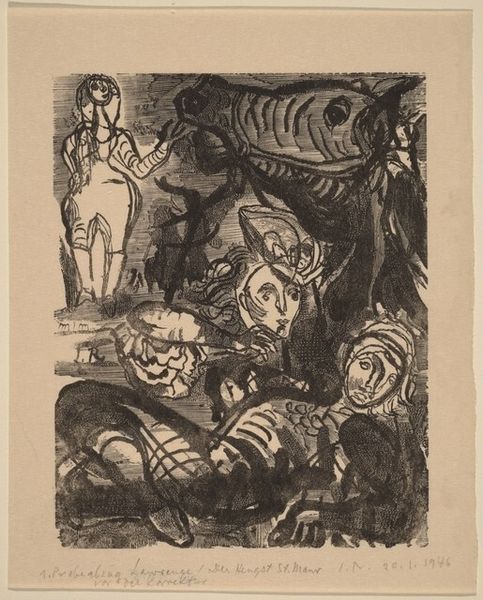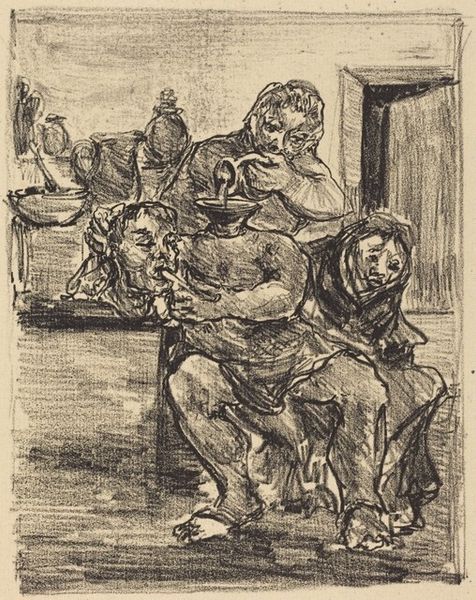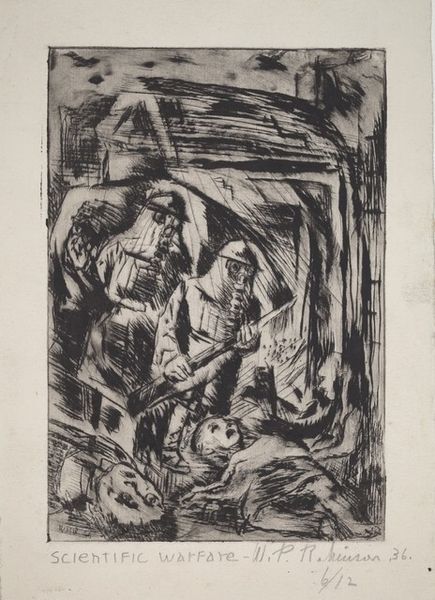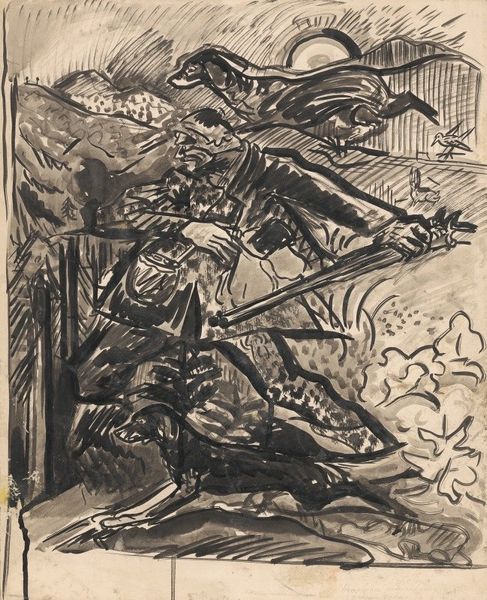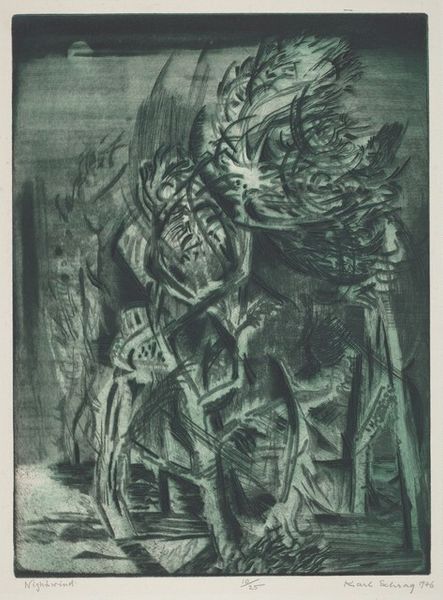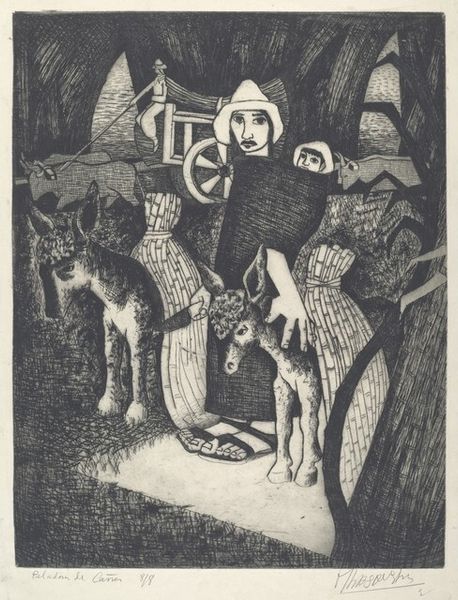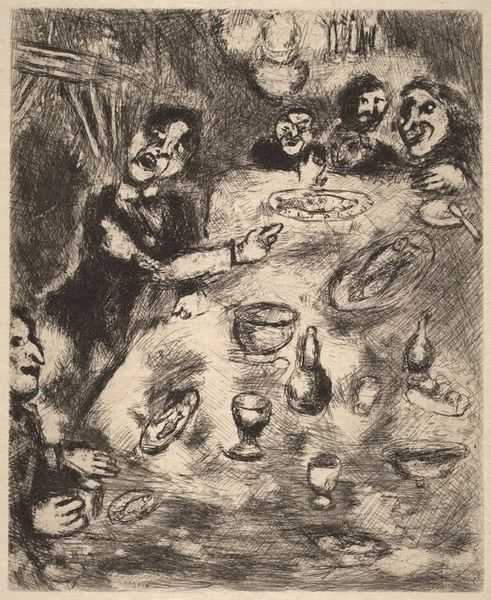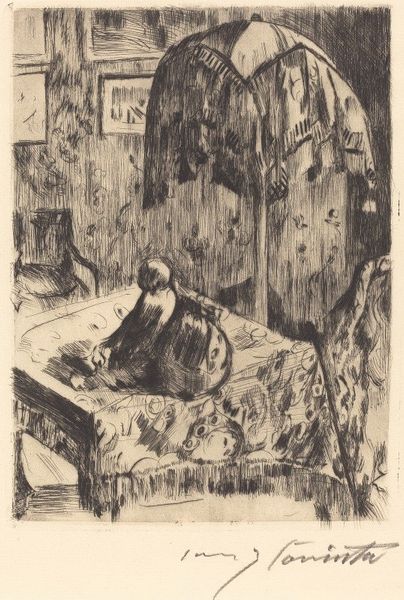
print, etching
#
portrait
#
ink drawing
#
narrative-art
# print
#
etching
#
figuration
#
expressionism
Copyright: National Gallery of Art: CC0 1.0
Editor: Here we have Marc Chagall's etching "The Peasant and the Serpent," created sometime between 1927 and 1930. It's such a stark and strange image. The rough lines and almost chaotic composition give it a really unsettling feeling. There's this peasant figure brandishing an axe over what looks like a coiled serpent. What do you see in this piece? Curator: Ah, Chagall. Always swirling within worlds both earthly and fantastical. To me, the image speaks of confronting inner turmoil. That serpent isn’t just a reptile; it's the weight of buried anxieties, of forgotten nightmares lurking just beneath the surface. Look at how it coils so menacingly. Chagall masterfully renders emotional distress as palpable as any object. Editor: So, you think it’s more symbolic than literal? I was reading it as a kind of primal struggle. Curator: Well, aren’t they always intertwined? What is any "real" struggle *but* the outward manifestation of something roiling inside? Consider that axe; is the peasant wielding it for defense or destruction? Perhaps even self-destruction. The ambiguity, that very delicious uncertainty, is where its power truly lies. Don’t you think? Editor: I guess I do! It's making me rethink what I assumed the peasant’s motivations were. I initially saw it as simple aggression. Now it's much murkier, much more human. Curator: Precisely. And remember, dear friend, art often serves not to give answers but to unlock doors to richer questioning. Editor: Absolutely. This was an enlightening experience that showed me the many layers of narrative conveyed by just one piece of art.
Comments
No comments
Be the first to comment and join the conversation on the ultimate creative platform.
